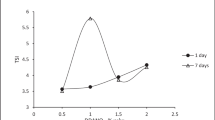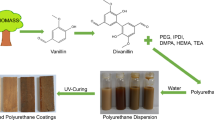Summaries
Water-based binders, which make it possible to formulate low-solvent coatings for wood in industrial coating processes, are attracting more and more attention in the light of changing legislation (eg in Europe) and the growing environmental awareness of end users.1,2 Here water-based acrylic dispersions are becoming increasingly important as being suitable for making low-solvent products. A comparative study between conventional acrylic dispersions (called homogeneous dispersions) and those of multi-stage polymers (called heterogeneous dispersions) is presented in terms of the properties of the pure dispersion films and water-borne clear varnishes. For the application field of clear varnishes for wooden window frames a new dispersion based on a high specialised polymerisation technology was developed.
Zusammenfassung
Wäßrige Bindemittel, die ein lösemittelarmes Formulieren wäßriger Holzlacke ermöglichen, gewinnen zunehmend an Interesse, insbesondere auch aufgrund erfolgter oder zu erwartender Gesetzesänderungen (bes. in Europa) und dem wachsenden Umweltbewßtsein der Endverbraucher.1,2 Für diese Anwendung werden die Acrylatdispersionen immer wichtiger, da sie zur Herstellung lösemittelarmer Produkte besonders geeignet sind. In diesem Artikel werden Acrylatcopolymerisatdispersionen verglichen, die zum einen konventionell (bezeichnet als homogene Dispersionen) zum anderen nach einem Mehrstufenprozeß (bezeichnet als heterogene oder core/shell-Dispersionen) hergestellt wurden. Bestimmt und verglichen wurden die Eigenschaften der Dispersionsfilme und von aus den Dispersionen hergestellten wäßrigen Klarlacken. Für den Anwendungsbereich der industriellen Fensterlasuren wird eine neue Acrylatcopolymerisatdispersion beschrieben, die mit einer speziellen Polymerisationstechnologie hergestellt wurde.
Résumé
Liants aqueux qui offent la possibilité de formuler des produits de peinture à faible teneur en solvants pour bois atirent de plus en plus d’attention en vue de la législation toujours en évolution (par ex. en Europe) et la sensibilité croissante des consommateurs à l’égard de l’environnement.1,2 Ici, les dispersions acryliques aqueuses deviennent progressivement importantes comme étant appropriées pour la production de produits à faible teneur en solvant. On présente une étude comparative des dispersions acryliques conventionnelles (dispersions homogènes) et celles de polymères préparées par un procédé à multi-étapes (dispersions hétérogènes ou core/shell) sous termes des caractéristiques des feuils de dispersion pure et des vernis clairs hydrosolubles préparés à partir desquelles. Dans le domaine d’application des vernis clairs industrielles (lazures) pour les chassis de fenêtres décrit-on une nouvelle dispersion basée sur une téchnologie de polymérisation haute raffinée qui a été mise au point.
Similar content being viewed by others
References
May T, VOC-Richtlinie allgemein und Aspekte für die Holz- und Möbelindustrie; DFO Tagung 4.11.1997, Berichtsband Nr. 35, S.47ff
Hansemann W, VOC-Richtlinie allgemein und Aspekte für die Holz- und Möbelindustrie; DFO Tagung 4.11.1997, Berichtsband Nr. 35, S. 85ff
Hora G, Qualitätsanforderungen an Holzfenster-Beschichtungssysteme; Holz-Zentralblatt Nr. 71, S. 1098–1102
Busato F, Coatings of the world;European Coatings Journal, (3), S. 228–231, 1997
Bankowski, Beck, Eichfelder and Nissler, Rohstoffe für umweltverträgliche Holzlacke; WKI Bericht 31, S. 145–157
Gerharz B, Butt HJ and Momper B, ‘Morphology of heterogeneous latex particles investigated by atomic force microscopy’.Prog. Colloid Polym. Sci.,100, 91–95, 1996
Désor U and Krieger St, waterborne acrylic dispersions for wood laquers;European Coatings Journal, (12), p. 920–923, 1996
Désor U and Krieger St, Wäßrige Dispersionen für Holzlacke; Welt der Farben 7+8 1997, S. 6–12
Désor U, Wässrige Lacke und Beschichtungen auf Basis von Polymerdispersionen; WKI Bericht 31 (Fraunhofer Wilhelm Klauditz Intitut f. Holzforschung, Braunschweig), S. 57–81
Author information
Authors and Affiliations
Rights and permissions
About this article
Cite this article
Désor, D., Krieger, S., Apitz, G. et al. Water-borne acrylic dispersions for industrial wood coatings. Surface Coatings International 82, 488–496 (1999). https://doi.org/10.1007/BF02692644
Issue Date:
DOI: https://doi.org/10.1007/BF02692644




